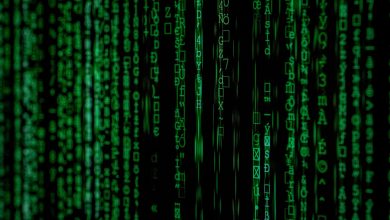
A ransomware attack can leave any system locked and every plan disrupted. It sparks fear, confusion, and a sense of urgency that is hard to ignore. The need for clear ransomware attack recovery solutions has never been greater.
This guide captures the strategies that matter most. It directs focus toward secure restoration and ongoing protection. With the right approach, recovery can lead to stronger defenses in the future.
In this blog, we will discuss everything you need to know about ransomware attack recovery solutions. Read more!
Immediate Steps to Take After a Ransomware Incident
The first response to a ransomware attack must be swift and focused. Every second counts because attackers often move quickly to spread their reach. Delay can result in more systems being locked and more damage being done.
One of the most important steps is disconnecting affected systems from the network. This reduces the chance of the attack spreading further. By limiting access, the damage remains contained within a smaller environment.
Acting with calm precision during those first moments is critical. Panic often leads to mistakes that can worsen the situation. A clear and structured response makes the difference between recovery and lasting loss.
Assessing the Scope and Impact of the Attack
Once immediate containment is achieved, the focus shifts to assessment. Knowing the scope of the damage is essential before recovery can begin. Without accurate information, every decision made may carry hidden risks.
Assessment should include which devices, applications, and data were affected. Understanding the attacker’s methods helps identify weak spots in the system. This knowledge becomes the base for targeted recovery efforts.
The impact also goes beyond technology. A ransomware incident often touches financial stability, reputation, and client trust. Measuring these effects is necessary to plan a complete and realistic recovery.
Isolating Infected Systems to Contain the Threat
Isolation is about more than just disconnecting a computer from the network. It requires separating affected devices at every possible level. Servers, cloud accounts, and user devices all need thorough checks.
Containment stops ransomware from jumping into areas that were safe before. Each infected point must be secured so it cannot communicate outward. This step ensures the threat does not reappear during recovery.
Proper isolation buys valuable time for the recovery team. It creates a stable environment where the next steps can be taken carefully. Without this measure, every other action risks collapse.
Data Backup and Recovery Strategies That Work
Backups are the foundation of effective ransomware backup and recovery. They provide the only secure way to restore data without paying attackers. A good backup strategy makes the road to normal operations clearer.
Recovery is strongest when backups are stored in multiple locations. Cloud systems, offline drives, and isolated servers all serve different purposes. Together, they create a stronger safety net against future attacks.
Testing recovery methods is just as important as creating backups. A backup that cannot be restored quickly loses its value. Consistent checks make sure data can be retrieved when it is most needed.
Decryption Tools and Professional Recovery Services
Some ransomware strains have known decryption tools available. These tools can help unlock files without engaging with attackers. However, not every ransomware type has a working decryption method.
When tools are not enough, professional services step in. Experts bring both experience and resources that an internal team may lack. Choosing the right partner ensures that restoration is secure and thorough.
Specialized providers also offer ransomware recovery as part of their service. This gives businesses a structured and reliable way forward. With trusted guidance, organizations can regain stability and reduce risks of reinfection.
Legal and Compliance Considerations in Ransomware Cases
A ransomware attack often raises legal questions that cannot be ignored. Laws vary depending on industry, region, and type of data compromised. Failing to follow these rules can lead to fines and penalties.
Compliance also involves reporting requirements. Some organizations must notify regulators or clients if sensitive data was exposed. These obligations must be handled promptly to avoid larger consequences.
Legal consultation helps businesses navigate these demands with confidence. Having expert advice ensures actions taken meet all requirements. This support reduces risks and builds trust with stakeholders.
Strengthening Cybersecurity Infrastructure Post-Attack
Recovery does not end when systems are restored. Strengthening defenses is the next crucial stage. Without this, the risk of another attack remains high.
Cybersecurity upgrades often include stronger firewalls, better monitoring tools, and stricter access controls. Each layer adds another barrier against future threats. Together, they form a more resilient environment.
Organizations must also review past weaknesses revealed by the attack. Fixing those gaps ensures that attackers cannot exploit the same entry points again. Continuous improvement is the only way forward.
Employee Training and Awareness to Prevent Recurrence
Technology alone cannot stop ransomware. Employees are often the first line of defense. Without training, mistakes can reopen the door to attackers.
Training programs should focus on spotting suspicious emails and links. These are the most common ways ransomware enters systems. Practical lessons make staff more confident and cautious.
Regular awareness campaigns reinforce these habits over time. When employees understand their role in security, the organization becomes much stronger. Awareness remains a low-cost but high-impact defense.
The Role of Ransomware Backup and Recovery Solutions
Ransomware backup and recovery solutions are at the core of resilience. They provide safety nets that help restore systems without losing vital data. Their presence often determines whether downtime is short or long.
These solutions work best when combined with a complete strategy. Layered defenses ensure that even if one system fails, another stands strong. This balance gives organizations the best chance of bouncing back.
Businesses that rely on tested recovery tools gain more than protection. They gain confidence in facing unpredictable challenges. Stability becomes possible even in the face of modern threats.
Why Choose Ransomware Attack Recovery Solutions
Ransomware attack recovery solutions give a clear way forward when systems are locked. They bring order back to operations and help protect vital information. With the right approach, recovery can be faster and more secure.
These solutions also prepare you for what may come next. They give businesses a stronger path to prevent future risks. Take action today to keep your systems ready for tomorrow.
Did you find this article helpful? Explore our other blog posts for more insights.



